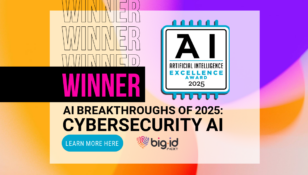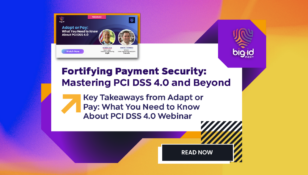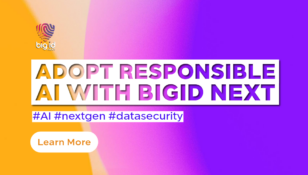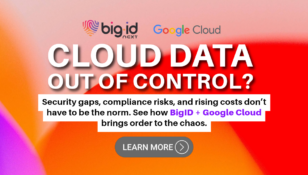Automated Data Security for Schools & Institutions of Higher Education
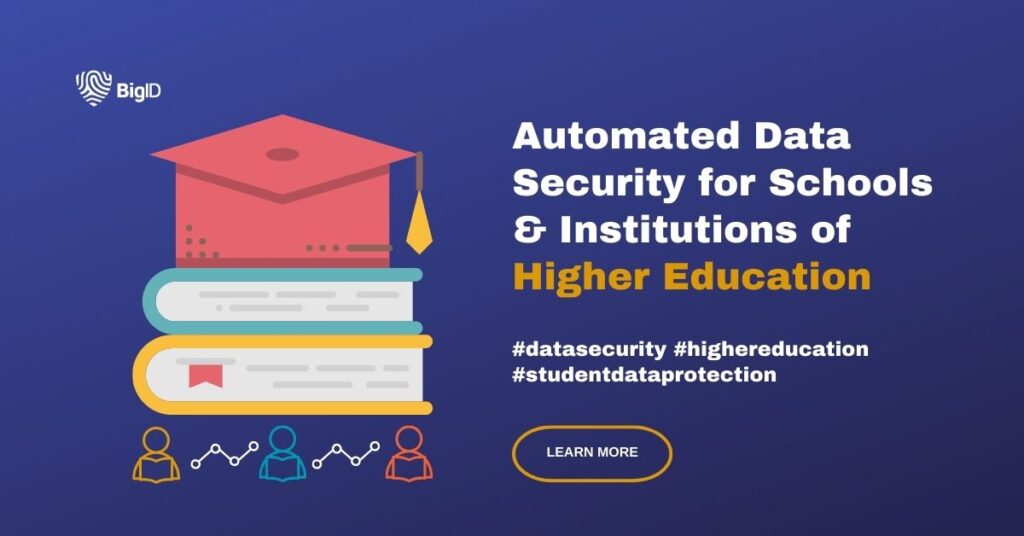
Today, K-12 schools and institutions of higher education (IHEs) rely heavily on data and technology for academic, operations, and business functions, which makes having a robust and resilient data-centric security strategy critical.
Schools tend to amass a vast amount of sensitive information, such as intellectual property, health and financial data, and applicants, students, teachers, alums, and faculty records. High turnover, valuable data, and highly prized intellectual property from research make the education sector a lucrative target for threat actors and cyber-attacks.
Why the Education Sector Needs a Data-Centric Security Strategy
According to IBM’s 2023 Cost of Data Breach Report, the average cost of a data breach in higher education was $3.65 million. The education sector needs to evolve its cybersecurity strategy as it continues to leverage a hybrid model to overcome its unique cybersecurity challenges.
In addition to protecting against cyber attacks, schools must comply with increasing data privacy and regulatory requirements:
- Family Educational Rights and Privacy Act (FERPA) secures students’ personally identifiable education records.
- Protection of Pupil Rights Amendment (PPRA) establishes rules for the collection and use of student survey or evaluation data.
- Health Insurance Portability and Accountability Act (HIPAA) sets standards to protect sensitive health information.
- The Gramm-Leach-Bliley Act (GLBA) applies to how education institutions collect, store, and use student financial records (e.g., tuition payments and/or financial aid) containing personal information.
- Children’s Online Privacy Protection Act (COPPA) requires operators of online services, apps, and websites to protect children’s data.
- California Consumer Privacy Act (CCPA) and the EU General Data Protection Regulation (GDPR) are global data protection and privacy regulations that require compliance.
If the education sector modernizes its cybersecurity strategy, it could increase efficiency, gain visibility, secure data, manage risk, and achieve compliance.
Data Security Challenges in Education
The education sector is a unique landscape that differs significantly from most organizations and institutions. It’s essential to consider several factors when developing a cybersecurity framework for schools and higher education to better protect against data breaches and cybercriminals. This industry must confront these various challenges:
High Attack Surface
Each year, schools acquire new data from a new cohort of students, teachers, and faculty using several networks, systems, and applications. When attackers exploit a vulnerability, they gain access, resulting in a data breach. The high turnover of these institutions creates a revolving door of data that increases data risk and the overall attack surface.
Data Breaches and Ransomware Attacks
Many institutions and universities have high tuition and endowments, collectively in the billions. It is no surprise that ransomware is the prominent method of cyberattack within the education sector. According to the 2022 Verizon Data Breach Investigations Report, 30% of data breaches in this industry are attributed to ransomware attacks.
High Third-Party Risk
Third-party vendors create a shared attack surface, forcing education institutions to take on additional security risks and complicating efforts to prevent data breaches.
Research, IP, and National Security
Some institutions of higher education conduct research that includes federal and state government projects, which can be a potential national security issue. Threat actors may see institutions as a backdoor into valuable military, biological, and medical information that could be overexposed.
Student Data Privacy and Governance
Data breaches can harm students and lead to fraud, identity theft, and extortion tactics, opening schools to non-compliance, reputational damage, and liability. The Gramm-Leach-Bliley Act (GLBA), Family Educational Rights and Privacy Act (FERPA), and Children’s Online Privacy Protection Act (COPPA) require schools to follow direct cybersecurity strategies and must demonstrate compliance. These regulations also protect parents’ rights to see their children’s data (school records) and limit access to it.
AI Innovation & Security
Educational institutions must balance the need to enable students to progress and evolve with AI technologies. However, policies and guardrails need to be implemented for AI and ChatGPT to protect sensitive data, research, and intellectual property.
Cloud Migrations
For institutions that struggle with legacy systems, transferring digital assets from on-premises to cloud-based environments is a complex endeavor, and data privacy, security, and data management issues can lead to non-compliance.
Prominent Cyberattacks and Data Breaches in Education
K-12 and higher education institutions are hacked regularly, and the situation shows no signs of slowing down. Here are a few examples of education data breaches:
- Cyberattack: In 2019, Georgia Tech’s central database was hacked, exposing the records of over 1.27 million students, staff, and faculty.
- Third-Party Data Breach: In May 2023, MOVEit, a file transfer platform, was hacked, affecting up to 160 schools. The US Department of Education requires MOVEit to share information with the National Student Clearinghouse (NSC). The platform is used by over 3,500 institutions.
- Ransomware: In March 2023, 200,000 files were stolen from the Minnesota School District and then published online after a cybergang let it be known the district had missed paying a ransom of $1 million dollars. The 74 an organization dedicated to examining the issues impacting the education of America’s 74 million children, reported that the files included extremely sensitive information that involved abuse, mental health issues, and suspensions.
How BigID Helps Educational Institutions Protect Student and Faculty Data
Educational institutions need a data-centric, risk-aware security approach to safeguard their most important data. BigID combines industry expertise with advanced technology, data security, and analytics to transform regulatory operations and drive growth while maintaining compliance. BigID enables schools and higher education to gain complete visibility and insights into critical business data, manage risk, address data vulnerabilities, enforce security policies, secure data, and comply with regulatory requirements.
With BigID’s security-by-design approach, you can:
- Discover Your Data: Discover and catalog your sensitive data, including structured, semi-structured, and unstructured – in on-prem environments and across the cloud.
- Know Your Data: Automatically classify, categorize, tag, and label sensitive data with unmatched accuracy, granularity, and scale.
- Improve Data Security Posture: Proactively prioritize and target data risks and automate data security posture management (DSPM).
- Remediate Data Your Way: Manage data remediation and delegate to stakeholders, open tickets, or make API calls across your tech stack.
- Enable Zero Trust: Reduce overprivileged access and overexposed data and streamline access rights management to enable zero trust.
- Mitigate Insider Risk: Proactively monitor, detect, and respond to unauthorized internal exposure, use, and suspicious activity around sensitive data.
- Reduce Your Attack Surface: Shrink the attack surface by proactively eliminating unnecessary, non-business critical sensitive data.
- Secure Your Cloud Migration: Optimize cloud migration with data-driven insight and compliance, automatically reduce redundant data, and move the data that matters most.
- Streamline Data Breach Response: Quickly and accurately detect and investigate breach impact, facilitate prompt incident response, and notify relevant authorities and affected students and staff.
- Accelerate AI Security: BigID efficiently builds policies to govern AI based on privacy, sensitivity, regulation, and access to control the data shared with LLMs and AI applications. Use AI with responsible guardrails to manage and protect proprietary information and student data.
- Achieve Compliance: Automate compliance with end-to-end privacy and security capabilities and frameworks to protect personal, sensitive, and regulated data.
Schedule a demo with one of our data security experts today.



